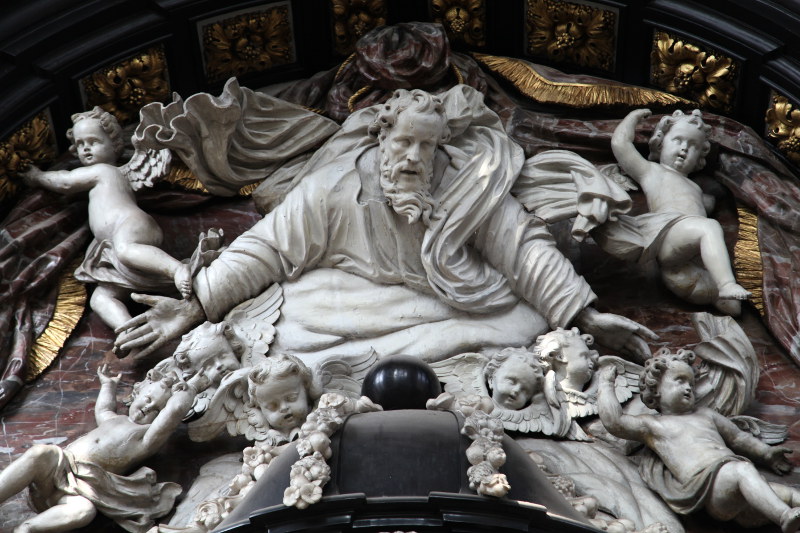Built between 1220-1250, Saint Nicolas was built in honour of the patron saint of sailors, merchants, and children. Funding for the church came from the first two: sailors and merchants. Typical to Belgium, it was build using blue-grey Scheldt rock quarried from Tournai and replaces two wooden versions of Saint Nicolas that once stood here.
We all know Saint Nicholas; Holland, Belgium, and Luxembourg are the origin of Sinterklaas (Santa Claus) who is based on stories and folk tales of Saint Nicolas. In this part of Europe, Sinterklaas comes on a steamboat from Spain and not in a sled pulled by reindeer or boomers. This is interesting given Flanders’ historical relationship with Spain.
Beyond religion, the building’s history has long been intertwined with daily life in the Ghent community. Before the Belfry was used by soldiers to see the surrounding city and alert townsfolk to impending danger, the tower at Saint Nicholas was the primary watchtower. For almost a century (the 13th century) this was the tallest building in Ghent.
It was also used as a horse stable. According to one local, when Napoleon occupied Ghent, he cleared out the church and used it as a stable for his horses; another said it was during the French Revolution that soldiers used it as stables. The later doesn’t make much sense since Revolutionary forces were small, disorganized, and didn’t have the manpower to occupy one of the most powerful cities in Europe. But, the French and Napoleon did occupy Ghent during the Napoleonic Wars.
There are other examples of experiences that damaged the church throughout its history. During the Protestant Reformation, while the people of Ghent were secreting away treasures from Sint Bavo (like the Lamb of God), Sint Nicolas bore the brunt of iconoclasm and many decorations, paintings, statues, and other idols were destroyed. This is not surprising given that Calvinists were particularly vicious in destroying anything related to Saint Nicolas. We looked hard to see if we could find even one roof angel amidst the vaulted medieval ceilings, but alas, the Protestants mobs were very thorough in their destruction. Nothing in the church survived from before iconoclasm.
